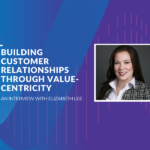Mastering The Success Plan
Success plans provide a repeatable and scalable path to delivering value throughout the entire customer lifetime. This, in turn, enables the revenue from these customers to be consistently and predictably retained and expanded. The leaders that aren’t able to provide this proactive, repeatable path to value for their customers are at greatest risk of failing to enable their business to maximize net revenue retention.
48% of companies believe that their strategic account management plans lack effectiveness due to inefficient company structures, systems, and processes (Global Partner Training). Despite these challenges, how can your organization create success plans that drive repeatable and scalable customer value?
You need to build your success plans around a clearly-defined customer outcome strategy and execute them through outcome-based playbooks. These success plans will serve as a revved-up vehicle that your customer-facing teams will use to deliver value-based outcomes at every point in the customer journey. This article breaks down this strategic initiative into two important components: the development of your customer outcome strategy and the creation of your success plans.
Developing Your Customer Outcome Strategy
The first step in designing your customer outcome strategy is to understand who your ideal customer is and what their goals are. If you know why your customers buy your products, the problems they’re trying to solve, and the jobs that need to be done, you can work backwards to understand how your product(s) can solve those problems and create value. Once you understand how your product(s) can enable that value, you can define what tasks and activities are required to support product usage, which gives your customer-facing teams a roadmap for defining value.
A customer outcome strategy creates a repeatable, scalable process that starts in the sales motion when value is prescribed, and carries from sales to implementation to adoption. All together, this provides clarity for the customer and alignment between your customer-facing teams.
The Success Formula
Customer Pains/Desired Gains + Your Product Features Available To Be Adopted + Predefined, Value-Based Outcomes =
- Customer clarity
- Empowered customer-facing teams
- Repeatable path to measurable value
4 Steps To Building Strong Success Plans
Step 1: Collaborate & Co-create
As you start building out your success plans, it’s essential to collectively review your internal knowledge about the customer. We recommend bringing together your customer-facing teams (i.e. CS, Sales, Product, Marketing, Support, etc.) for an in-depth session dedicated to customer knowledge sharing. Each team will have their own unique perspectives and experiences that will give your organization an opportunity to learn about the customer at different stages in the journey.
Taking into account the different viewpoints of all of your customer-facing teams, your organization should aim to answer the following:
- Who are our customers?
- What are our customers’ pain points?
- What critical moments with our customers do we need to get right?
- What does adoption look like for our customers?
- What is our end-to-end customer journey?
The goal of this exercise is to compile your various sources of information through the different insights of each team and align around a shared understanding of the customer.
Step 2: Conduct Research
Next, you need to conduct research to validate your assumptions. Regardless of whether your organization has a research program in place, the majority of your data will likely come from market research. While market research provides a valuable snapshot of customer trends and insights, it’s critical that you layer this information with knowledge about your specific users through conducting user research.
We also recommend using qualitative methods, such as internal and external interviews with your most and least successful accounts. The insights gained from this research will give your team an in-depth look at the nuanced thoughts, opinions, and experiences of your different customers. Collectively, you’ll get a much clearer picture about why your customers behave the way they do, what their key pain points and challenges are, and what specific outcomes they want to achieve.
Keep in mind that these customers will all have vastly different needs, values, and experiences with your company; however, taking the time to facilitate these conversations on
on both ends of the spectrum will give your teams a much better understanding of what desired outcomes look like for a customer, why it’s important to prescribe these outcomes, and how you can better be delivering on these outcomes.
Step 3: Document & Share
Once you’ve compiled your findings, you need to share these learnings widely across your organization. The discoveries in your research should add new layers of comprehension that improve your organization’s collaboration with the customer.
It’s important that your leadership team communicates these insights in a digestible, visually-engaging format. We recommend using journey maps, personas, and user profiles to allude to the key findings in your research. These resources can provide your company with a shared language for understanding the customer and the value that your customers derive from your product(s) from their POV.
Step 4: Operationalize Outcomes With Playbooks
Upon this strong foundation, you’re ready to build outcome-based playbooks that deliver on your success plan. The first piece in designing playbooks is to establish the driving “why” behind your organization. Your team should be able to identify what your users are trying to accomplish, why they buy your product(s) and what problem your product(s) solves for them. From there, you can determine the outcomes you want your playbooks to achieve and the outcomes you then want to prescribe to your customers.
Next, you need to determine what actions need to be taken and milestones need to be reached in order for these playbooks to be successful. Your plan should factor in the tasks that your organization will be responsible for, as well as those that your customer needs to take, in order to achieve the desired state. At this stage, you can now identify who has the skills, access, and authority required to successfully complete these actions.
Lastly, you need to indicate which technology will be used to action these playbooks, and specify the timeline that these playbooks should be executed within. As an important final step, your success plan will map these playbooks to your customer journey to give your organization an end-to-end view of the process.
For a deeper dive into playbook creation, watch our webinar on how to design outcome-based playbooks that deliver on your customer outcome strategy.
Putting Your Success Plans In Motion
Congratulations! You’re ready to put your success plans in action.
While there’s no doubt that this process can be challenging and time-consuming, it’s critical that your organization puts in the effort to create this repeatable, scalable path to customer value. At the end of the day, this investment will pay dividends in putting the customer at the center of every step of your customer journey as the key to driving recurring revenue growth.
Designing customer outcome strategies and success plans is what we specialize in at Valuize. Discover how we help some of the largest and fastest growing software companies achieve unparalleled recurring revenue growth by supercharging their CS organization.





